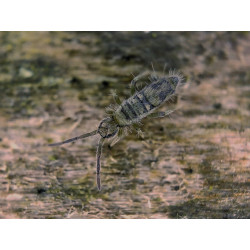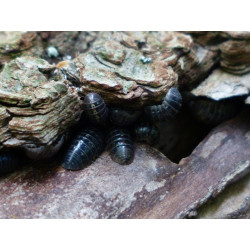Suppliers
No supplier
Life bioactive Terrarium
Creating a bioactive terrarium requires an ecosystem where various insects and microorganisms play a crucial role in decomposing organic matter and maintaining soil cleanliness. Here are some commonly used insects in bioactive terrariums and tips for setting up one:
Commonly Used Insects in Bioactive Terrariums
-
Isopods (Pill Bugs)
- Function: Isopods are excellent for decomposing dead leaves and other decaying plant matter. They also help aerate the soil, improving plant health.
- Examples: Armadillidium vulgare, Porcellio scaber, Trichorhina tomentosa.
-
Springtails (Collembola)
- Function: Springtails feed on mold, fungi, and decaying organic matter. They help control mold growth in the terrarium.
- Example: Folsomia candida.
-
Earthworms
- Function: Earthworms decompose organic matter and aerate the soil, improving its structure and fertility.
- Examples: Eisenia fetida (red wiggler), Lumbricus terrestris (common earthworm).
-
Beneficial Nematodes
- Function: Nematodes help decompose organic matter and control populations of harmful pests.
- Examples: Steinernema spp., Heterorhabditis spp.
Tips for Creating a Bioactive Terrarium
-
Suitable Substrate
- Use a mix of potting soil, coconut fiber, sphagnum moss, and leaf litter to create a substrate rich in organic matter. This mix will encourage the proliferation of decomposer insects.
-
Humidity and Drainage
- Ensure the terrarium has a good drainage system to avoid stagnant water accumulation. Use a layer of clay balls or gravel at the bottom of the terrarium. Maintain adequate humidity to support the activity of insects and microorganisms.
-
Hiding Spots and Cover
- Add natural elements like pieces of wood, bark, and leaf litter to provide hiding spots and additional food sources for the insects.
-
Live Plants
- Introduce plants suited to the terrarium's humidity and conditions. Plants help maintain a natural balance by producing oxygen and absorbing carbon dioxide.
-
Lighting
- Use appropriate lighting for the plants and inhabitants of the terrarium. LED or fluorescent lighting can provide necessary light without overheating the terrarium.
-
Pest Control
- Maintain a balanced ecosystem by introducing beneficial nematodes and avoiding the introduction of harmful pests. Regularly monitor the terrarium for signs of unwanted pests.
By following these tips, you can create a bioactive terrarium that is not only aesthetically pleasing but also ecologically balanced and beneficial for the plants and animals it houses.

There is 1 product.
Showing 1-1 of 1 item(s)
Active filters

